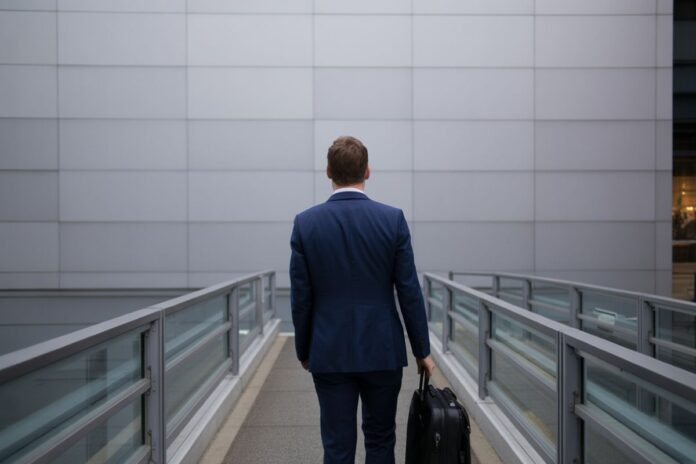U.S. Travel Association Predicts Slow Business Travel Growth for 2025
Published on October 3, 2025
The U.S. Travel Association has released its latest estimates, shedding light on the trajectory of business travel across major U.S. destinations for 2025. Expecting a moderate increase in business travel spending—primarily in bustling cities such as New York City, Los Angeles, Miami, Chicago, Las Vegas, and San Francisco—the forecast indicates a slower pace of growth compared to previous years. While business travelers may enjoy some perks from this slow growth, the overall picture is less optimistic, particularly regarding international visitors.
Slower Business Travel Growth in 2025
The forecast reveals that domestic business travel spending is set to rise by just 1.4% in 2025 compared to 2024. This modest increase comes as a stark contrast to the more robust growth seen in prior years. Interestingly, group travel seems to be experiencing slightly faster growth, but the general atmosphere remains subdued when measured against the thriving leisure travel sector, which is expected to see a 1.9% increase.
For business travelers heading to cities like New York or Miami, this slower growth could offer a silver lining. With fewer travelers vying for the same spaces, venues may be less crowded, and prices for accommodations and services could be more manageable than during peak travel years. This shift may be particularly appealing for those looking to navigate meetings and conferences without the stress of overwhelming crowds or inflated costs.
Decline in Inbound International Travel
While domestic travel appears to be slow, the forecast for international visitors is notably bleak. Spending on inbound international travel is anticipated to decline by 3.2%, reflecting a 6.3% drop in the number of international visitors. This downturn is chiefly attributed to a significant reduction in travel from Canada, although international inflow from other regions remains static.
For potential tourists from abroad, this reduction in international visitation may bring about mixed outcomes. While attractions may be less crowded, thereby enhancing the overall experience, potential travelers might encounter challenges in securing visas. Extended processing times and increased fees could complicate plans for those looking to experience the U.S.
Rising Expectations for the Future
Despite the slow growth anticipated for 2025, there is an air of optimism among industry experts regarding the years beyond. Projections indicate that domestic business travel might regain momentum starting in 2027, driven by more robust business investments and favorable economic conditions. Similarly, the outlook for international visitors is expected to improve by 2026, largely due to high-profile global events such as the FIFA 2026 World Cup and the 2028 Summer Olympics in Los Angeles.
These upcoming international spectacles are anticipated to draw visitors from every corner of the globe, beckoning them to cities like Los Angeles and Miami. As the travel industry braces for this influx, stakeholders can look forward to rejuvenated tourism in the years ahead.
Key Destinations Seeing Slow Business Travel Growth
Business travel trends reveal that key cities like Las Vegas, Chicago, and San Francisco are following a similar pattern of muted growth. Las Vegas, traditionally a hub for conferences and corporate gatherings, will experience a slower pace in 2025. Chicago, well-known for its active convention scene, and San Francisco, the technology industry’s focal point, are also expected to maintain a more restrained trajectory. For leisure travelers, this could translate to a more relaxed experience in these typically bustling areas.
The Impact on Tourism and Travel Plans
The predicted decline in both business travel spending and international visitors presents a complex scenario for the tourism sector. On one hand, tourists will likely experience the benefits of fewer crowds at attractions, allowing for a more enjoyable visit in cities that often see the hustle and bustle of business travelers. On the other hand, this decrease in international traffic could rob certain tourism sectors of their vibrancy and diversity.
For those who are planning visits to the U.S., this forecast offers both challenges and opportunities. Leisure travelers might find a more competitive landscape for accommodations and experiences—especially in cities like Miami, Chicago, and Las Vegas—linked to lower prices and reduced competition from business trips. Nevertheless, prospective international travelers should remain vigilant regarding potential complications in securing visas, particularly if new regulations or processing delays arise.
Planning for 2026 and Beyond
Looking further into the future, the landscape for tourism in the U.S. appears more promising. As global economies stabilize and major events like the FIFA World Cup and the Olympics approach, international travel to the U.S. is expected to expand significantly. This anticipated upturn will likely create a ripple effect, benefiting both business and leisure travelers as the tourism industry gears up for heightened activity, particularly in cities gearing up to host these major events.
What This Means for Tourists and Travelers
While 2025 may herald a downturn in business travel to prominent U.S. destinations, the period that follows showcases promise for tourism expansion. Visitors can anticipate a travel environment characterized by lower costs, reduced congestion, and an overall more pleasant experience, especially in high-traffic cities like New York and Los Angeles. Yet travelers must be cognizant of ongoing global economic challenges and visa complications that could affect their plans. For now, those eager to explore the U.S. might appreciate the quieter travel landscape in 2025, creating an opportunity for a more enriching experience while remaining aware of evolving international policies.
